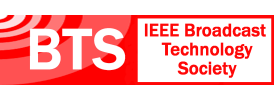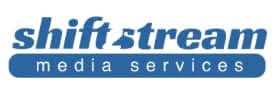- About
- Members
- Sponsors
- Subcommittees
- Technical Documents
- News
- Events
- Spotlight ATSC 3.0
- Contact Us
- Member Login
- Member Meetings
- Advanced Search
Search Site
Member Links
- About
- Members
- Sponsors
- Subcommittees
- Technical Documents
- News
- Events
- Spotlight ATSC 3.0
- Contact Us
- Member Login
- Member Meetings
- Advanced Search
Someone You Should Know
Posted on October 1, 2014 in ATSC News
NHK’s Kenichi Murayama
Kenichi Murayama brings a wealth of experience and keen insights to his work in the ATSC TG3 Technology Group developing the next-gen ATSC 3.0 standard. He joined the NHK (Japanese Broadcasting Corporation) in 2002. From 2002 to 2008, he worked for the NHK Administration Engineering Department, in the Transmission & Audience Reception Engineering Center. There, he was engaged in projects involving network design for constructing Single Frequency Networks with ISDB-T .
In 2008, Murayama began work at the Broadcasting Network Research Division of the NHK Science and Technology Research Laboratories (NHK STRL). “I was engaged in research and development related to the next generation of digital terrestrial broadcasting and 8K Super Hi-vision.” After his work there, Murayama moved on to the Planning and Coordinating Division at NHK STRL. Beginning in 2013, he has been busy attending a variety of conferences and exhibitions, including the NAB Show. “Most recently I’ve also been active in ATSC activities related to surrounding the development of the physical layer of ATSC 3.0,” says Murayama.
NHK and the ATSC
NHK has been an active member of the ATSC since the beginning of the committee’s standards development work. “NHK is only one public broadcaster in Japan, but the NHK STRL is dedicated to developing general broadcasting technology for production, transmission, and reception,” says Murayama. “The environment surrounding terrestrial broadcasting has changed.
“With the advent of tablet devices, and changes in high quality video (like HD) for mobile devices, on the other hand UHD (4K and 8K) for fixed reception, interest in next- generation terrestrial broadcasting is growing in Japan and around the world,” he adds. “We’re excited to continue our good relationship with the ATSC and share the latest in technology to enrich the future of broadcast media.”
Murayama continues “There are differences between the United States and Japan; but we are dedicated to discussing the future of broadcasting services. We believe ATSC 3.0 may be the hottest topic in the world of broadcasting right now.”
Outside the ATSC
“I’m often on an airplane between Japan and the states these days,” Murayama says. “I try to spend as much time with my wife and son as possible. I’d love to take the family on full tour of Washington, D.C. in the near future!”
Posted in ATSC News
News Categories
News Archives
Subscribe
Subscribe to The Standard, our monthly newsletter. Learn More
Join ATSC
ATSC is a membership organization with both voting and observer categories. Voting members include corporations, nonprofit organizations, and government entities, and they participate actively in the work of ATSC. Observers are individuals or entities not eligible to be a voting member.
Subscribe to our Newsletter
Subscribe to The Standard, our monthly newsletter, to stay up-to-date with ATSC news and events around the world.
Site Links
Contact Us
Advanced Television Systems Committee, Inc.
1300 I Street NW, Suite 400E
Washington, DC 20005
Do you have questions about ATSC?
About ATSC
The Advanced Television Systems Committee, Inc., is an international, non-profit organization developing voluntary standards and recommended practices for digital terrestrial broadcasting. ATSC member organizations represent the broadcast, broadcast equipment, motion picture, consumer electronics, computer, cable, satellite, and semiconductor industries. ATSC also develops digital terrestrial broadcasting implementation strategies and supports educational activities on ATSC standards.
© 2025 ATSC








































